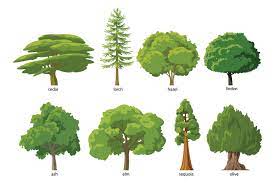
The Importance of Trees in Our Environment
Trees are essential components of our environment, providing numerous benefits that contribute to the well-being of our planet and all living organisms. From producing oxygen to providing habitats for wildlife, trees play a crucial role in maintaining ecological balance.
Oxygen Production
One of the most vital roles of trees is their ability to produce oxygen through photosynthesis. Trees absorb carbon dioxide and release oxygen, which is essential for the survival of humans and other animals. Without trees, the air we breathe would be significantly poorer in oxygen.
Climate Regulation
Trees help regulate climate by absorbing carbon dioxide, a greenhouse gas that contributes to global warming. By sequestering carbon and releasing oxygen, trees play a key role in mitigating climate change and maintaining a stable climate.
Wildlife Habitat
Trees provide habitats for a diverse range of wildlife, including birds, insects, and mammals. Forests serve as homes for countless species and support biodiversity by creating ecosystems where different organisms can thrive.
Soil Conservation
The roots of trees help prevent soil erosion by holding the soil together and reducing runoff. Trees also improve soil fertility by cycling nutrients from the leaves and branches back into the ground, creating a healthy environment for plants to grow.
Aesthetic Beauty
In addition to their environmental benefits, trees enhance the beauty of landscapes with their diverse shapes, colors, and textures. Whether in urban parks or rural forests, trees contribute to the aesthetic appeal of our surroundings.
Conclusion
It is clear that trees are invaluable assets to our environment, providing a wide range of benefits that support life on Earth. By recognizing the importance of trees and taking steps to protect and preserve them, we can ensure a sustainable future for generations to come.
6 Essential Tips for Healthy Tree Growth and Maintenance
- Choose the right tree for your location and soil type.
- Plant trees away from buildings and power lines to avoid future problems.
- Water newly planted trees regularly, especially during dry periods.
- Prune trees properly to promote healthy growth and shape.
- Mulch around the base of trees to retain moisture and suppress weeds.
- Monitor trees for signs of pests or diseases and take action promptly.
Choose the right tree for your location and soil type.
Selecting the appropriate tree species based on your specific location and soil type is crucial for ensuring the tree’s long-term health and growth. Different trees have varying requirements in terms of sunlight, water, and soil conditions. By researching and choosing a tree that is well-suited to thrive in your particular environment, you can promote successful establishment and reduce the risk of potential issues such as poor growth or susceptibility to diseases. Conducting thorough research and consulting with local arborists can help you make an informed decision when selecting the right tree for your landscape.
Plant trees away from buildings and power lines to avoid future problems.
When planting trees, it is important to consider their location carefully to prevent potential issues in the future. Planting trees away from buildings and power lines is crucial to avoid problems such as root damage to foundations or branches interfering with utility lines. By selecting appropriate planting sites that provide enough space for the tree’s growth, homeowners can ensure the long-term health and safety of both the tree and surrounding structures. Proper planning and placement of trees can help minimize maintenance costs and potential hazards, creating a harmonious environment for both nature and infrastructure.
Water newly planted trees regularly, especially during dry periods.
To ensure the healthy growth and establishment of newly planted trees, it is crucial to water them regularly, especially in dry periods. Adequate watering helps the trees develop strong root systems and withstand environmental stresses. By providing consistent moisture to the root ball of newly planted trees, you can promote their survival and long-term health. Remember to monitor soil moisture levels and adjust your watering schedule as needed to support the growth of these young trees.
Prune trees properly to promote healthy growth and shape.
Properly pruning trees is essential to promote healthy growth and shape. By removing dead or diseased branches, trimming overgrown areas, and shaping the tree’s canopy, you can improve airflow, sunlight penetration, and overall tree health. Pruning also helps prevent potential hazards such as falling branches and promotes the tree’s natural form and structure. Regular pruning maintenance ensures that trees remain strong, resilient, and visually appealing in their environment.
Mulch around the base of trees to retain moisture and suppress weeds.
Mulching around the base of trees is a beneficial practice that helps retain moisture in the soil and suppresses weed growth. By creating a layer of mulch, you can reduce water evaporation, allowing the tree’s roots to stay hydrated for longer periods. Additionally, the mulch acts as a barrier that inhibits weed growth, minimizing competition for nutrients and sunlight. Overall, mulching is a simple yet effective way to promote the health and vitality of trees in your landscape.
Monitor trees for signs of pests or diseases and take action promptly.
Monitoring trees for signs of pests or diseases is crucial for maintaining their health and longevity. By staying vigilant and observing any unusual changes in the foliage, bark, or overall appearance of trees, you can detect potential issues early on. Taking prompt action, such as consulting with a certified arborist or implementing appropriate treatment measures, can help prevent the spread of pests or diseases and protect the overall well-being of the trees in your environment. Regular inspections and timely interventions are key to preserving the beauty and vitality of trees for years to come.
